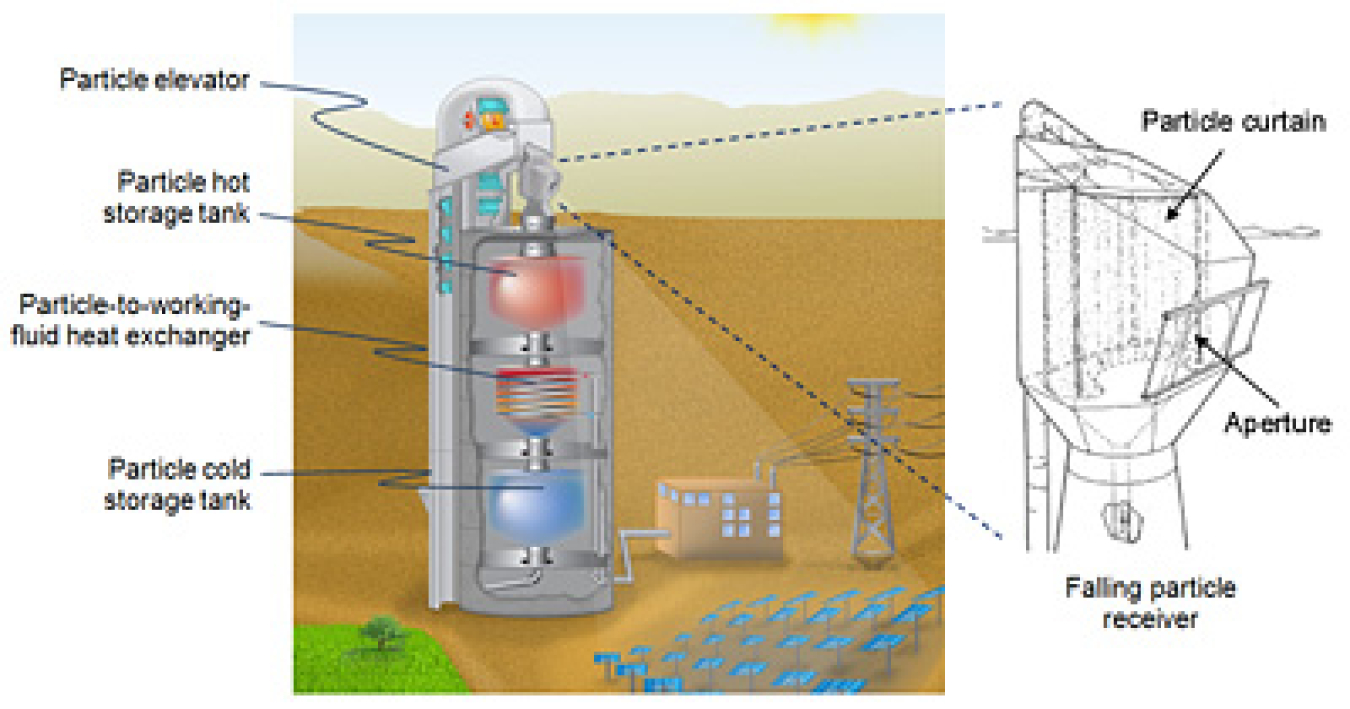--This project is inactive--
Sandia National Laboratories with partners Georgia Tech, Bucknell University, King Saud University, and DLR, are developing a falling-particle receiver and heat-exchanger system to increase efficiency and lower costs under the 2012 Concentrating Solar Power (CSP) SunShot R&D funding opportunity announcement (FOA).
Approach
This project seeks to advance falling-particle receivers by passing particles through a receiver with recirculation that allows more heat to be transferred to the particles. The concept enables higher temperatures and greater efficiencies at a lower cost as compared to today's receivers. The research team is pursuing technical innovations that include advances in:
- Receiver design, with consideration of particle recirculation, air recirculation, and novel designs for increased particle heating
- Particle materials to increase the solar absorptance and durability
- Balance of plant for falling-particle receiver systems including thermal storage, heat exchange, and particle conveyance.

This conceptual drawing illustrates a high-temperature falling-particle receiver system that will achieve greater efficiencies and lower costs.
Innovation
The use of solid particles as the heat-transfer and storage media—rather than conventional fluids such as liquid molten salts or air—is unique. The falling-particle receiver appears well-suited for power tower systems ranging from 10–100 megawatts. Such flexibility, combined with lower costs of thermal energy storage, could enable higher penetrations of CSP systems and help meet SunShot Initiative goals.
The SunShot CSP R&D program seeks to accelerate progress toward the cost target of $0.06 per kilowatt-hour through novel and revolutionary research into CSP technologies. Learn about other concentrating solar power research.

